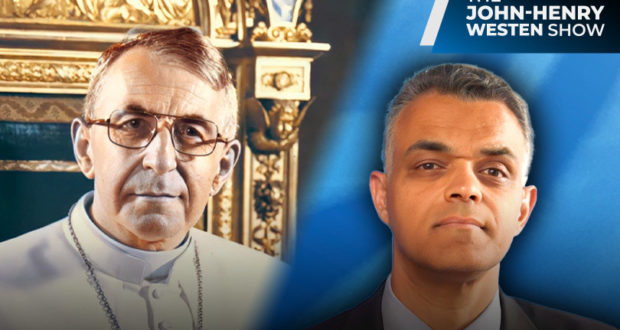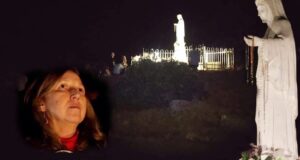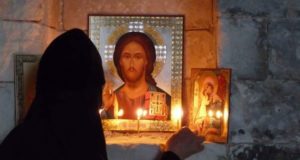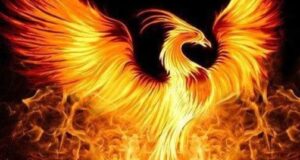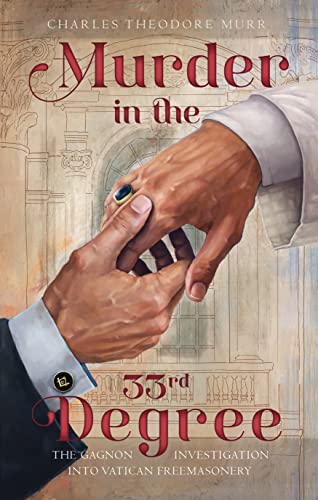
Louis Knuffke – كتاب حديث بعنوان “جريمة قتل في الدرجة الثالثة والثلاثين” يعرض تفاصيل اجتماع مثير للجدل قبل ساعات من العثور على الأب الأقدس ميتًا.
كان آخر رجل تحدث إلى البابا يوحنا بولس الأول، كاردينالًا من الكوريا الرومانية الذي كان البابا يعتزم عزله من منصبه بسبب عضويته في الماسونية. بعد ساعات فقط من لقاء ساخن مع الكاردينال في القصر الرسولي ، عُثر على البابا ميتًا.
في ذلك الاجتماع، قدم غانيون إلى يوحنا بولس الأول نتائج تحقيق استمر ثلاث سنوات في الكوريا الرومانية بأكملها ، والذي أجراه بأمر من البابا القديس بولس السادس. سعى التحقيق على وجه التحديد إلى الكشف عن وجود أي ماسونيين داخل مكاتب الفاتيكان.
برز رجلان في هذا التحقيق عن المناصب التي كانا يتمتعان بها داخل الكوريا: رئيس الأساقفة أنيبال بوغنيني ، مهندس ليتورجيا نوفوس أوردو ، والكاردينال سيباستيان باجيو ، رئيس مجمع الأساقفة، المسؤول عن تعيين الأساقفة في جميع أنحاء العالم . تحت ولاية باجيو التي استمرت 12 عامًا ، تم فرض سن تقاعد 75 على الأسقفية ، مما سمح له بترشيح أساقفة ذوي ميول ليبرالية في جميع أنحاء العالم. تم تأكيد عضوية كل من باجيو وبوجنيني في الماسونية من خلال وثائق تم التحقق من صحتها من قبل عملاء خاصين للإنتربول ، منظمة الشرطة الجنائية الدولية ، وفقًا لشهادة الأخ شارل المر (Fr. Charles Murr).
بحلول عام 1978 ، بسبب تورطه في الماسونية ، أرسل بولس السادس بوغنيني إلى إيران بصفته سفيرًا رسوليًا ، حيث كان يُعتقد وفقًا لمر ، أنه يمكن أن يتسبب في أقل قدر من الضرر. ومع ذلك ، ظل باجيو يشغل منصبه في الفاتيكان عندما تم انتخاب يوحنا بولس الأول لرئاسة بطرس. كانت إقالته من بين الموضوعات الرئيسية في لقاء غانيون مع جان بول الأول في 25 سبتمبر 1978.
خلال ذلك الاجتماع، وفقًا لشهادة المر، الذي قاد غانيون إلى الاجتماع وتحدث معه على الفور بعد ذلك. بعد ثلاثة أيام ، 28 سبتمبر ، اتصل البابا بالكاردينال ليقابله في ذلك اليوم. بعد الرد على أن جدول أعماله كان مزدحمًا ، وافق باجيو على مقابلة الأب الأقدس في مكتبه في ذلك المساء.
في الساعة 8 مساءً في 28 سبتمبر ، دخل الكاردينال باجيو الغرف البابوية. لم يكن هناك أي شخص آخر ليحضر بينما كان اثنان من الحرس السويسري ينتظران خارج الباب. كان الوقت من اليوم وغياب الآخرين عن الاجتماع كلاهما غير عادي. استمر الاجتماع قرابة الساعة. الشهادة الوحيدة بخصوص ذلك الاجتماع البابوي جاءت بعد بضعة أيام من أحد أفراد الحرس السويسري المناوب: أن صوت باجيو الغاضب قد تمّ رفعه ويمكن سماعه من الباب ، مما يشير إلى مواجهة ساخنة مع الحبر الأعظم.
يقول المر: “في الساعة الثامنة صعد باجيو إلى منزل الأب الأقدس في القصر الرسولي ، وكان معه لمدة ساعة تقريبًا. وكان هناك صراخ. ليس البابا. لم يكن البابا يصرخ. كان باجيو يصيح في البابا. كيف نعرف ذلك؟ أنا أعرف ذلك. حدث وعرفت. كان ذلك من خلال حارس سويسري كان عند الباب الخارجي. كان هناك حارسان سويسريان. أبلغوا عن هذا الصراخ. غادر باجيو. غاضب. بعد ساعة واحدة.”
تم العثور على يوحنا بولس الأول ميتًا في صباح اليوم التالي في الساعة 4:45 صباحًا. تغير تقرير الفاتيكان الرسمي حول سبب وفاته عدة مرات. وكان التقرير الأخير هو أن الحبر الأعظم أصيب بنوبة قلبية أثناء الليل حوالي الساعة 11 مساءً ، ولم يتم إجراء أي تشريح أو فحص دم على الإطلاق.
ظل الاجتماع الأخير ليوحنا بولس الأول مع الكاردينال باجيو وعضوية الأخير في الماسونية مخفيًا من قبل الفاتيكان لعقود. مقال في مجلة تايم يحكي القصة هو الدليل الوحيد منذ الوقت الذي تمكن الأب تشارلز المر (Fr. Charles Murr) من التعافي كدليل خارجي. يقول المر: “المكان الوحيد الذي رأيت فيه تقريرًا عن لقاء بين الأب الأقدس يوحنا بولس الأول والكاردينال باجيو ، سيباستيان باجيو ، كان في مجلة تايم. انا لدي نسخة منه. لقد كلفني ذلك غاليًا للعثور عليه “.
يزعم المر أن المواجهة بين البابا والكاردينال رفيع المستوى ، وهو عضو في كل من الكوريا الرومانية والمحفل الماسوني ، ربما كانت هي التي تسببت في إصابة يوحنا بولس الأول بنوبة قلبية بعد ساعات فقط. لكن بالنظر إلى طبيعة المواجهة ، يزعم المر أيضًا أن ظروف وفاة الحبر الأعظم ستعتبرها جريمة قتل ماسونية.
“البابا ، الذي كان يعاني من قلب سيء ، يتناول أدوية ضغط الدم ، على ما أعتقد ، بسبب تلك المواجهة ، أصيب بنوبة قلبية بعد ساعتين أو ثلاث ساعات وتوفي. الآن نقول ، حسنًا ، هذه ليست جريمة قتل … سألت الكاردينال غانيون: هل كان يعتقد أن البابا قُتل؟ فقال ، “كما تعلم ، تشارلز. هناك طرق عديدة لقتل الرجل. أعتقد أن هذا ما حدث. أعتقد أن هذا هو القتل. هذا هو القتل الذي أتحدث عنه”.
دعا المر الفاتيكان إلى إصدار تقرير غانيون الاستقصائي حول وجود الماسونيين داخل الكوريا الرومانية، بما في ذلك الوثائق المتعلقة بوغنيني وباجيو. الدعوة مهمة بشكل خاص في ضوء التطويب القادم ليوحنا بولس الأول في 4 سبتمبر. قد يلقي تقرير غانيون الضوء ليس فقط على وفاة يوحنا بولس الأول ولكن أيضًا على الأشياء التي أوقعت الكنيسة في أزمتها الحالية.
‘He was shouting at the Pope’: Catholic priest claims Freemason cardinal killed John Paul I
Louis Knuffke – A recent book titled ‘Murder in the 33rd Degree’ details a contentious meeting hours before the Holy Father was found dead.
The last man to have spoken to Pope John Paul I, soon to be beatified, was a cardinal of the Roman Curia whom the Pope intended to remove from office because of his membership in Freemasonry. Just hours after a heated meeting with the cardinal in the Apostolic Palace, the Pope was found dead.
At that meeting, Gagnon presented to John Paul I the findings of a three-year investigation of the entire Roman Curia that he had conducted at the command of Pope St. Paul VI. The investigation specifically sought to uncover the presence of any Freemasons within the Vatican offices.
Two men stood out in this investigation for the positions they enjoyed within the Curia: Archbishop Annibale Bugnini, the architect of the Novus Ordo liturgy, and Cardinal Sebastian Baggio, the head of the Congregation for Bishops, responsible for the nomination of bishops throughout the world. Under Baggio’s 12-year tenure, a retirement age of 75 was imposed upon the episcopacy, allowing him to nominate liberal-leaning bishops the world over. The membership of both Baggio and Bugnini in Freemasonry was confirmed by documentation verified as authentic by special agents of INTERPOL, the International Criminal Police Organization, according Murr’s testimony.
By 1978, because of involvement in Freemasonry, Bugnini had been sent by Paul VI to Iran as Apostolic Nuncio, where, according to Murr, it was thought he could do the least harm. Baggio, however, still held his Vatican post when John Paul I was elected to the Chair of Peter. His removal was among the foremost subjects of Gagnon’s meeting with John Paul I on September 25, 1978.
During that meeting, John Paul I agreed to deal with Cardinal Baggio and his membership in the Lodge, according to the testimony of Murr, who drove Gagnon to the meeting and spoke with him immediately after. Three days later, September 28, the Pope telephoned the Cardinal to come meet him that day. After responding that his schedule was busy, Baggio agreed to meet the Holy Father in his study that evening.
At 8 p.m. on September 28, Cardinal Baggio entered the Papal Apartments. No one else was to be present while two Swiss Guards waited outside the door. The time of day and the absence of others at the meeting were both unusual. The meeting lasted about an hour. The only testimony regarding that papal meeting came a few days later from one of the Swiss Guards on duty: that the angry voice of Baggio had been raised and could be heard through the door, suggesting a heated confrontation with the Pontiff.
“At 8:00 Baggio went up to the Holy Father’s residence in the Apostolic Palace,” Murr relates, “and was with him for approximately an hour. And there was shouting. Not the pope. The pope was not shouting. Baggio was shouting at the pope. How do we know that? I happen to know it. I happen to know. It was through a Swiss guard who was at the outside of the door. There were two Swiss guards. They reported this shouting. Baggio left. Furious. After an hour.”
John Paul I was found dead the next morning at 4:45 a.m. The official Vatican report as to the cause of his death changed several times. The last report was that the Pontiff suffered a heart attack during the night around 11 p.m. No autopsy or blood test was ever conducted.
The last meeting of John Paul I with Cardinal Baggio and the latter’s membership in Freemasonry have been kept hidden by the Vatican for decades. A Time Magazine article telling the story is the only evidence from the time that Fr. Charles Murr was able to recover as outside evidence. “The only place,” Murr says, “that I saw a report of the meeting between the Holy Father, John Paul I and Cardinal Baggio, Sebastian Baggio, was in Time Magazine. I have a copy of it. It cost me dearly to find.”
Murr alleges that the confrontation between the Pope and the high-ranking Cardinal, a member of both the Roman Curia and the Masonic Lodge, very well may have been what caused John Paul I to suffer a heart attack only hours later. But given the nature of the confrontation, Murr also alleges that the circumstances of the Pontiff’s death would qualify it as a Masonic murder.
“The Pope, who had a bad heart, is taking blood pressure medicine, I believe, because of that encounter, suffered a heart attack two or three hours later and died. Now you say, well, that’s not really a murder … I asked Cardinal Gagnon: Did he think that the pope was murdered? And he said, ‘You know, Charles. There are many ways of killing a man.’ I believe that’s what happened. I believe that’s the murder. That’s the murder that I’m talking about.”
Murr has called on the Vatican to release the investigative Gagnon report on the presence of Freemasons within the Roman Curia, including the documentation on Bugnini and Baggio. The call is especially pertinent given the upcoming beatification of John Paul I on September 4. The Gagnon report may shed light not only on the death of John Paul I but on the things that have thrown the Church into its current crisis.
 Agoraleaks Agoraleaks
Agoraleaks Agoraleaks


